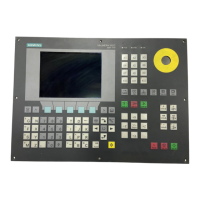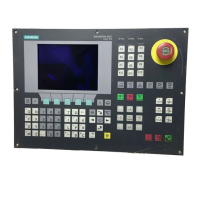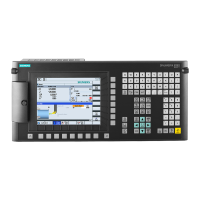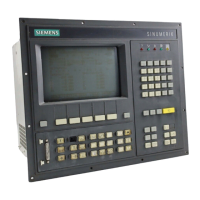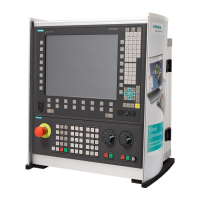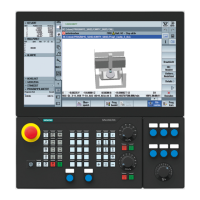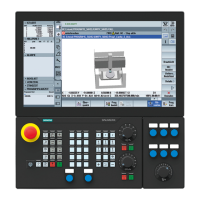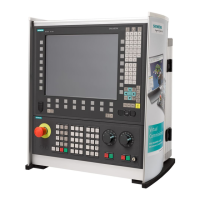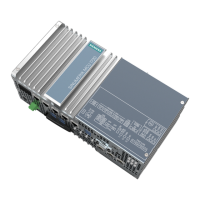Start-Up
2-32 SINUMERIK 801
Start-Up
temperature boost during this period).
1) The resolution (displacement per step of the stepper motor)
depends on mechanical data:
Resolution=leadscrew pitch/steps per revolution × reduction ratio
2) Calculate the max. motor speed according to the max. axis speed,
then the corresponding output torque of the stepper motor
according to the frequency – torque characteristics:
Motor speed=axis speed/leadscrew pitch/reduction ratio
2. Each axis must be configured with one BERO proximity switch (PNP
normal open, viz. 24Vdc level output) for generating zero marks for
reference point approach.
Notice
The quality of BERO proximity switches will have influences on the resolution
of reference points. It’s recommended to use high quality switches;
Make the clearance between end face of the proximity switch used for tesing
and the object under test as short as possible.
Do not use conventional contact stroke switches as proximity switches for zero
mark signals (because of the bigger signal jitters).
Reference point approach configuration
Since the stepper motors cannot generate zero marks required by the encoder,
the SINUMERIK 801 can take two configurations for approaching reference
points as: double-switch mode and single-switch mode.
Double-switch mode:
There is one reference cam in the axis and one BERO (inductive proximity
switch) at the leadscrew (one pluse is generated per revolution of the
leadscrew). Connect the reference cam to the inputs of DI (X100) (see
Chapter 3:”Built-In PLC Application for detailed description) while BERO to
connector X20 of the control system.
Leadscrew
BERO
Signal to X20
Machine body
Object under test
Reference cam
Signal to PLC input
Fig. 2-25 Configuration 1 for reference point approaching: double-switch mode
This mode enables high speed search for the reference cam, then for BERO at
a lower speed. With this mode, reference points can be approached rapidly
and more precisely. In addition, BERO can also be used for monitoring
revolutions.
!
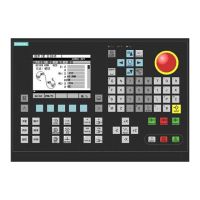
